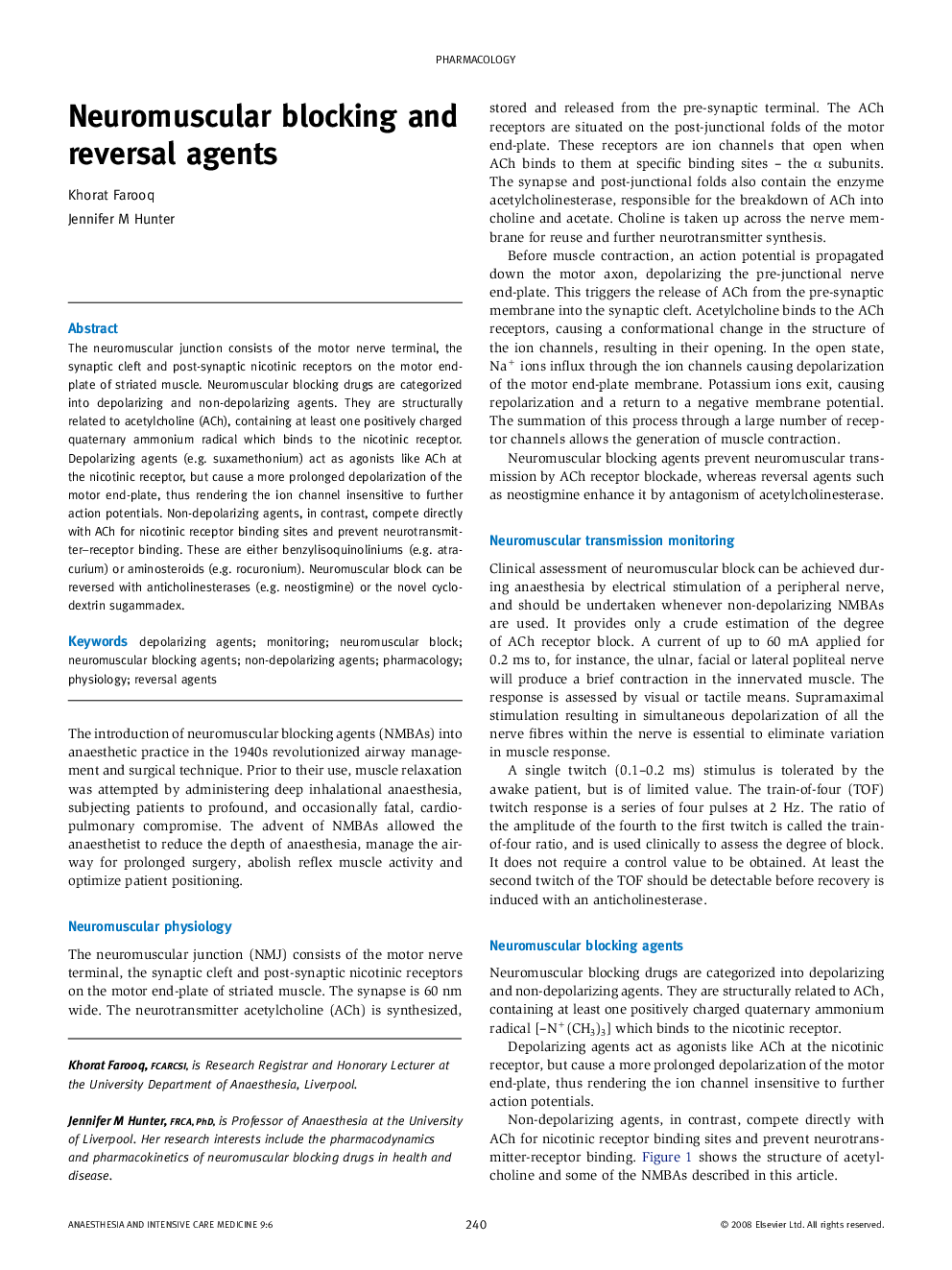| Article ID | Journal | Published Year | Pages | File Type |
|---|---|---|---|---|
| 2743528 | Anaesthesia & Intensive Care Medicine | 2008 | 4 Pages |
The neuromuscular junction consists of the motor nerve terminal, the synaptic cleft and post-synaptic nicotinic receptors on the motor end-plate of striated muscle. Neuromuscular blocking drugs are categorized into depolarizing and non-depolarizing agents. They are structurally related to acetylcholine (ACh), containing at least one positively charged quaternary ammonium radical which binds to the nicotinic receptor. Depolarizing agents (e.g. suxamethonium) act as agonists like ACh at the nicotinic receptor, but cause a more prolonged depolarization of the motor end-plate, thus rendering the ion channel insensitive to further action potentials. Non-depolarizing agents, in contrast, compete directly with ACh for nicotinic receptor binding sites and prevent neurotransmitter–receptor binding. These are either benzylisoquinoliniums (e.g. atracurium) or aminosteroids (e.g. rocuronium). Neuromuscular block can be reversed with anticholinesterases (e.g. neostigmine) or the novel cyclodextrin sugammadex.
